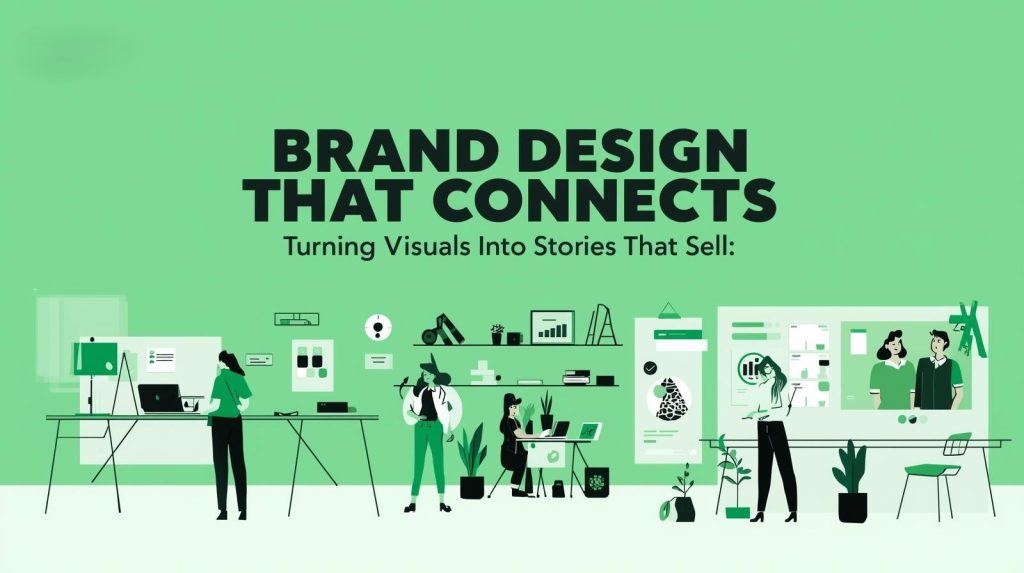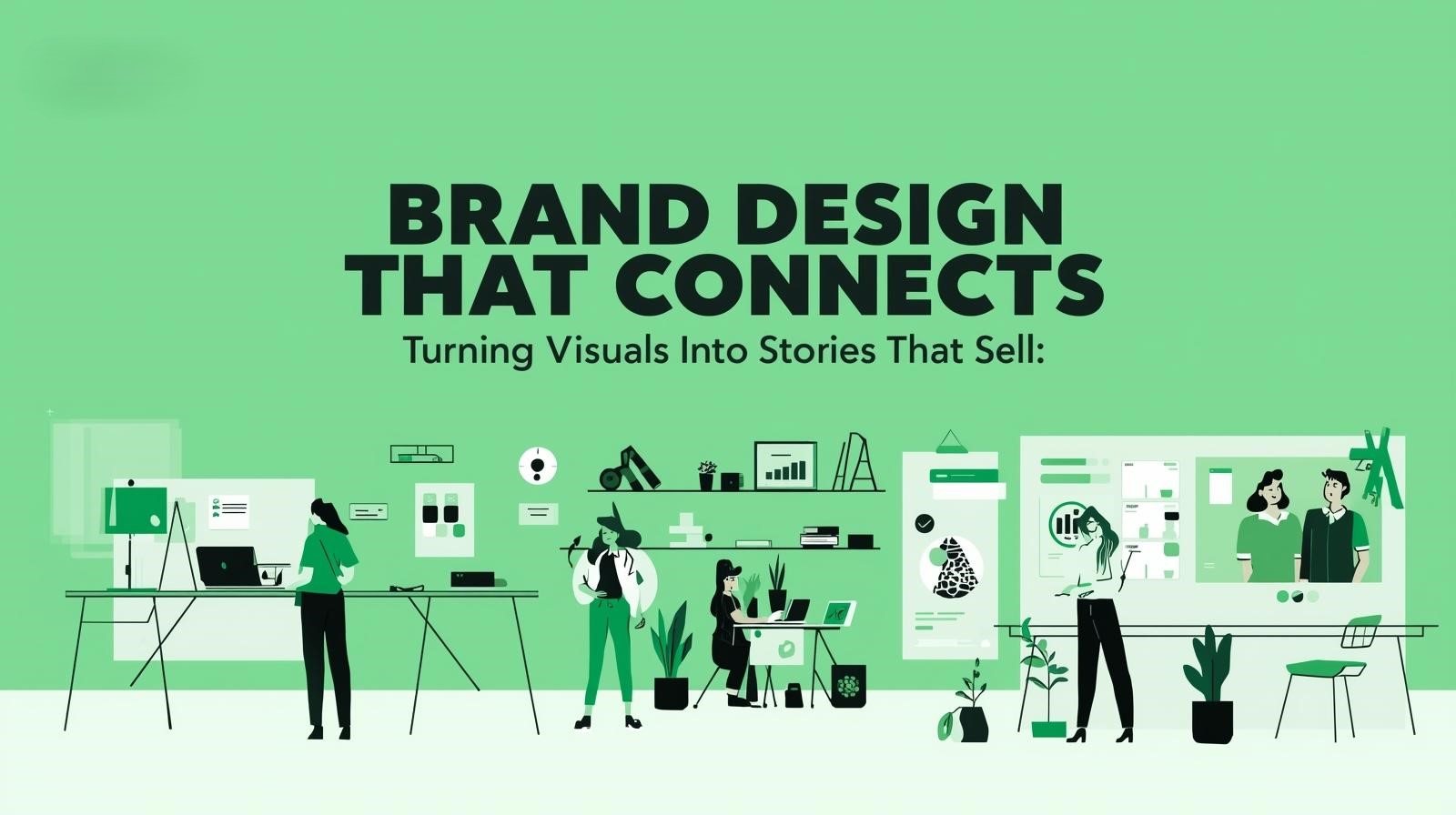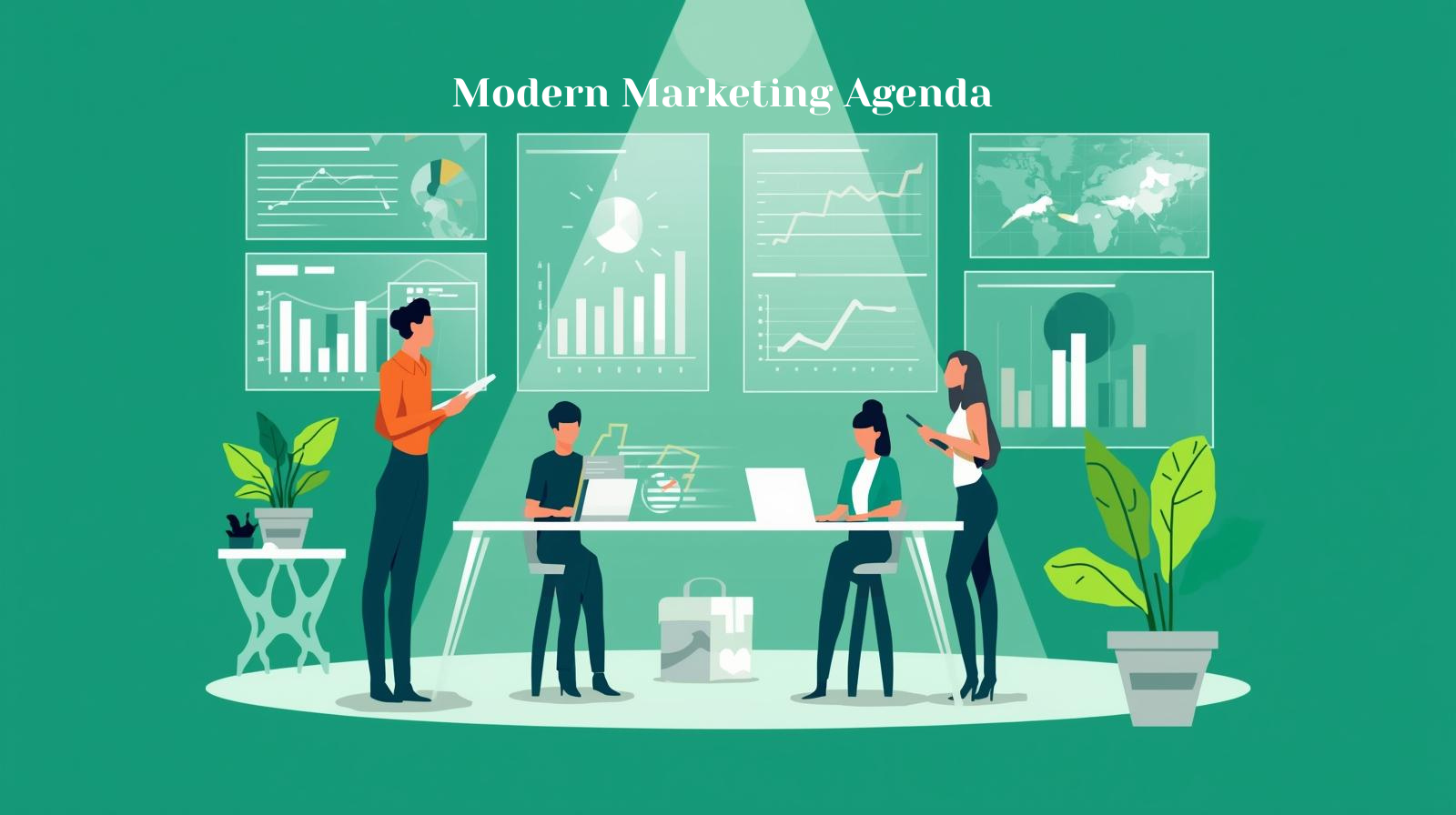In today’s attention-scarce digital world, your visuals aren’t just decoration—they’re your story in motion. A well-crafted brand design turns every color, font, and image into a powerful narrative that connects, persuades, and sells.
The Challenge: Too Much Noise, Too Little Attention
Let’s face it — we’re all scrolling faster, skimming harder, and tuning out more. In a world overloaded with content, capturing real attention isn’t about shouting louder — it’s about communicating meaningfully.
In line with the latest video marketing statistics, by the end of 2022, 82% of online traffic would come from video content. These stats hold firm ground, considering that landing pages that feature videos generate 800% more conversions. — a massive opportunity gap.
Brands that bridge this gap—those whose visuals match their message—earn more trust, recall, and conversions.
Why Visual Storytelling Wins
Humans are wired for visuals. Studies also demonstrate the “picture superiority effect,” showing that visuals are more likely to be stored in long-term memory. Three days after seeing new information, people remember 65% of information paired with an image, versus only 10% of text-based information (https://medtechintelligence.com/).
So when a brand uses storytelling and strong visual identity together, people not only notice — they remember.
According to Dash Video marketing statistics for your 2025 campaigns, 96% of marketers say video helps users understand their offering, and 89% report positive ROI from video content.
Visual storytelling isn’t a “nice-to-have” anymore — it’s how modern brands connect emotion to action.
What Is Brand Design (and Why It Matters)?
Brand design is the visual expression of your brand’s strategy — your logo, colors, typography, imagery, iconography, motion, and layout — all crafted to communicate who you are and what you stand for.
A good brand design doesn’t chase trends; it expresses your brand’s truth — your story, history, and promise — in a way that’s instantly recognizable.
How Brand Design Powers Storytelling
1. Universal Visual Language
A strong brand design system helps your visuals speak universally. Consistent use of color, layout, and iconography builds familiarity across regions and cultures.
According to the siteimprove.com, users recognize brand visuals faster when design elements are consistent across channels.
Pro tip: Keep a “brand system” playbook with reusable color palettes, motion templates, and icon sets to ensure your visuals adapt globally without losing identity.
➡️ Expanding to new regions?
Localize your brand system with Ennova Studios — we’ll make your visuals resonate across markets.
2. Emotion & Empathy
Emotion drives memory — and purchasing decisions. World Economic Forum Report found that 70% of consumers buy from brands that reflect their personal values and emotions.
Your brand design sets the tone: warm tones create approachability, cool tones inspire trust, and balanced imagery signals professionalism. When visuals feel human, your audience feels seen.
➡️ Want to design visuals that spark emotion?
Partner with Ennova Studios to build brand design systems that tell stories people feel.
3. Clarity Through Simplicity
Complex ideas become clear when visuals lead the way.Not only does our brain process visual information so much more effectively than text, but visuals are also simply more persuasive.
A 3M-sponsored study found that presenters who use visual aids are 43 percent more effective in getting people to do what they want (liveplan.com). Infographics, explainer animations, and structured layouts help your audience “get it” instantly — critical in a time-starved digital world.
4. Memory & Shareability
Visuals paired with story are easier to recall and more likely to be shared. Marketbeam reports that social posts with visuals generate 650% higher engagement than text-only posts.
When your brand assets appear consistently across these high-engagement formats, recall compounds.
5. Trust & Authenticity
Modern audiences — especially Gen Z — crave realness. Multiple studies show that a high majority of Gen Z does prioritize authenticity and transparency.
Authentic brand design doesn’t try to imitate competitors; it visually expresses who you are. If your design language matches your values, you earn long-term trust.
➡️ Ready to align your visuals with authenticity?
Let Ennova Studios refine your brand narrative for consistent, trustworthy design storytelling.
Design Elements That Strengthen Your Story
Here are key brand design levers you can tune to make every visual part of your story:
- 🎨 Color with Intent: It takes about 50 milliseconds (ms) (that’s 0.05 seconds) for users to form an opinion about your website that determines whether they’ll stay or leave (cxl.com). Choose emotionally aligned, accessible color scales that reflect your brand promise.
- 🔤 Typography Hierarchy: Fonts set tone. Strong hierarchies improve readability and subconsciously communicate professionalism.
- 🖼️ Imagery & Illustration Style: Authentic photography or cohesive illustration styles make stories relatable and memorable.
- 🎥 Motion & Video: Video storytelling drives ROI. Wyzowl reports that 91% of businesses use video as a marketing tool in 2025, up from 85% in 2023.
- 📊 Data Visualization: Simplify complexity with clear charts and infographics. Structured visual storytelling improves comprehension and persuasion
Accessibility: Inclusive Visuals Build Stronger Brands
Accessibility isn’t just about compliance — it’s about connection.
According to W3C and WCAG 2.2 standards, accessible visuals expand audience reach and strengthen trust. Writing descriptive alt text, ensuring color contrast ratios, and adding captions to videos improve usability for everyone.
And here’s the bonus: improving accessibility also enhances SEO, because alt text and structured visuals help search engines understand your content better.
Accessibility equals empathy — and empathy builds better brands.
Final Thoughts
In 2025’s hyper-visual world, your brand design isn’t just decoration — it’s your storytelling engine.
When color, typography, imagery, and motion align with your authentic narrative, your visuals don’t just look consistent — they connect.
Because ultimately, design that connects sells.
FAQs
1.What is visual storytelling in brand design, and why is it important?
Visual storytelling in brand design uses images, colors, fonts, and layouts to express a brand’s message and values. It’s powerful because people process visuals faster than words, making it easier to build emotion and lasting brand recall.
2. How can a brand effectively use visuals to tell its story?
Brands can use consistent colors, fonts, images, and videos that match their identity to engage audiences. The aim is to show the brand story, not just tell it—making ideas easier to understand and inspiring stronger connections and action.
3. What types of visual content work best for brand storytelling?
Effective visual content includes photos, videos, interactive web designs, motion graphics, and thoughtful packaging. Videos work especially well—they combine movement, sound, and narration to bring a brand’s story and values to life.
4. How does visual storytelling impact customer engagement and sales?
Visual storytelling helps brands stand out in crowded markets by making messages more memorable and emotional. These emotional connections build trust, boost engagement, and often lead to higher sales.
5. What are practical tips for designing visuals that sell a brand story?
Use design elements to set the right mood, keep visuals consistent, and simplify messages with infographics. Add interactive or dynamic features to grab attention and leave a lasting impression that reflects your brand’s purpose.




